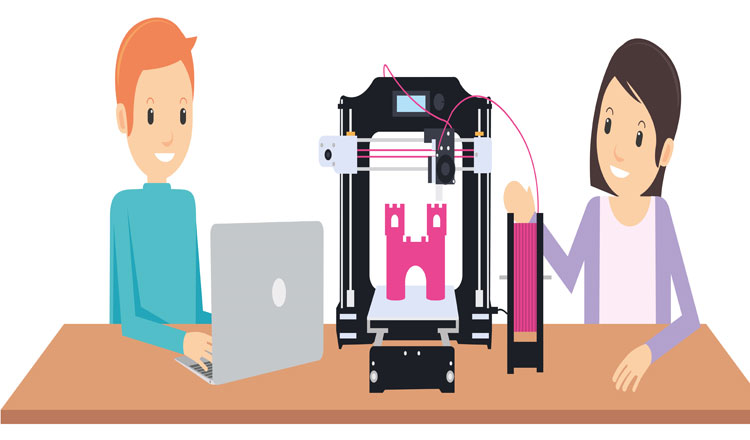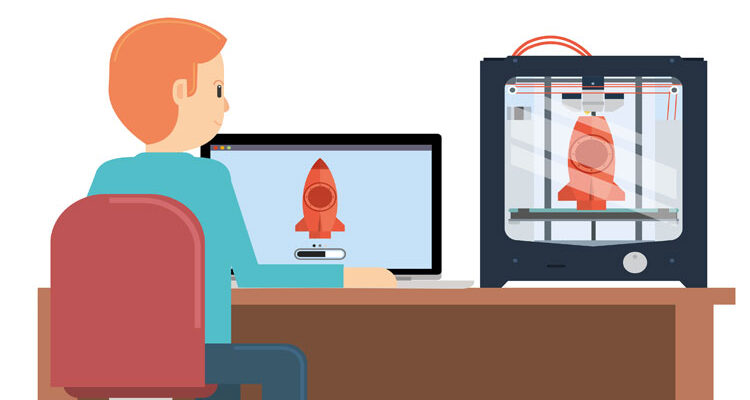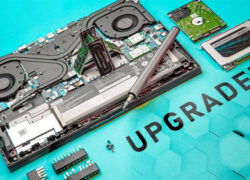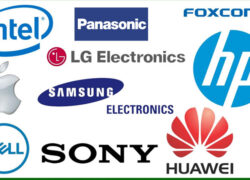What can be accomplished with 3D Printing is no longer theoretical. The technology is getting more integrated into the larger manufacturing ecosystem.
3D Printing may benefit almost any company in any industry. With access to technology, machines, and materials, the future of 3D Printing is bright.
In this article, we will look into the future of 3D Printing.
So let’s get started!
What is 3D Printing?
3D Printing is a manufacturing technique that includes generating three-dimensional items using instructions from a digital file.
The procedure is frequently referred to as “additive manufacturing” since it involves an additive process in which an object is created by layering multiple materials together.
Each 3D printing layer is a small portion of the total project, and the digital software directs the machine where to lay down the additive material.
Learning more about 3D Printing can prove highly beneficial in the near future. The process is fast and accurate, allowing companies to make complex structures using less material. 
Future of 3D Printing
Here are our predictions for the 3D printing future:
Becoming a Mainstream Technology for Serial Production
Companies across industries are becoming aware of the advantages 3D printing offers for production. The usage of 3D Printing for jigs, fixtures, and tooling, bridge manufacturing, and production parts has increased dramatically in recent years. And the heavy equipment and industrial machines industries have noticed this wide adoption.
Companies are discovering new applications to incorporate 3D Printing, ranging from tooling to spare/replacement parts and some end-use components. The automobile industry has started using 3D Printing for mass production.
BMW revealed late last year that it had installed the one-millionth 3D-printed part in its BMW i8 Roadster.
We will witness expansion from this sub-segment of jigs and fixtures and early use cases to mass production, spare parts, and functional end-use applications using 3D Printing into the future decade.
Design Software for 3D Printing will be More Advanced and Easy to Use
When it comes to constructing complex shapes, additive manufacturing can accomplish some incredible things. However, creating that sort of geometry requires complicated design software.
Designing for additive manufacturing is difficult because it goes against the grain for engineers who have been schooled to design traditional manufacturing.
But still, with the demand increasing drastically, software companies are working on developing integrated design solutions for additive manufacturing.
Autodesk, Dassault Systèmes, and PTC are among the companies looking at ways to make it as simple as possible for engineers to optimize their designs for additive manufacturing.
Creating integrated 3D printing software solutions will be a critical piece of the puzzle in bringing the technology to the public in the end.
Digitizing the Supply Chain by 3D Printing to Make It More Resilient
If there’s one thing the global pandemic has taught us, it’s that global supply systems can be unreliable.
When the healthcare supply chain was crippled by a scarcity of personal protective equipment (PPE) and ventilator parts, additive manufacturing was a key part of the solution. This clearly shows how big a role 3D printing can play in the supply chain.
With the help of 3D Printing, manufacturing may be distributed to any location with digital manufacturing equipment simply by sending a file over the internet. Transparency and collaboration would also be improved as a result of decentralization.
In the near future, most households will ultimately acquire brand files and print a product with only a few clicks, thanks to advances in 3D printing technology. This will ultimately help the supply chain become more resilient to situations like a global pandemic.
Education will help in the wider adoption of 3D Printing
Lack of expertise can create a number of roadblocks for the adoption of 3D Printing. For one thing, without a thorough understanding of additive manufacturing, businesses will find it difficult to establish a use case for 3D Printing.
Nonetheless, public knowledge of 3D Printing’s capabilities is progressively growing. A lot of effort is being made into educating the market on how to get started with 3D Printing and maximize its value.
Many businesses are launching online and on-site courses, hosting user tradeshows and workshops, and developing educational content to promote 3D Printing.
In addition, universities are developing courses to offer engineers a platform to learn about additive manufacturing.
Education can play a significant role in making additive manufacturing technology mainstream.
3D Printing Offering More Flexibility and Customization
Customers prefer to buy a product that is made for them precisely, satisfying their personal tastes and preferences, rather than a mass-produced commodity.
With additive manufacturing’s low-volume production capabilities, personalization and customization are simple to achieve. 3D Printing allows brands more freedom in responsive design.
Manufacturers may afford to make smaller batches rather than generating advanced market predictions and then spraying massive amounts of similar things into the market.
This gives designers and engineers a free hand to alter product designs and innovate cost-effectively as inspiration strikes, consumer mood is understood, or customer feedback trickles in.
3D Printing can open gates to customization, with each product manufactured to the utmost satisfaction of customers. Precisely why, the technology is rapidly growing in every industry.
3D Printing Will Become Smarter
The industry is constantly working to improve the efficiency and productivity of 3D Printing. The development of smarter systems, backed by sensors and machine learning, is one trend that is enabling this.
Manufacturers of 3D printers are beginning to integrate sensors into their machines to allow for in-process monitoring. Sensors and cameras installed inside a 3D printer can be used to measure numerous aspects of a build-in in real-time, allowing the construction process to be documented and requirements to be satisfied.
By combining machine learning algorithms such as Artificial intelligence with such sensors, 3D Printing can become a much smarter process. Sensors can collect useful information, which will be put into a machine learning system.
We believe that all 3D printers will be equipped with smart technology such as sensors and machine learning in the future. By lowering the likelihood of build failures, these technologies will dramatically improve process repeatability when paired with 3D Printing.
Final Verdict
The additive manufacturing industry is promising. The industry is far from reaching its full potential, yet it shows how important it can be in almost every industry.
Naturally, the rate of 3D printing acceptance will rise with time, with some industries, such as dentistry, virtually totally converting to 3D Printing. This expansion will be aided by a rising understanding of 3D Printing and its benefits.




